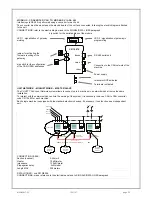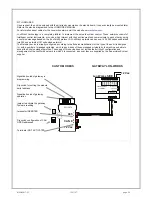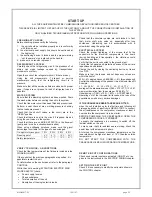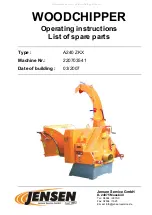
M03I40M7-03 15/11/07
page
37
ROUTINE MAINTENANCE
BEFORE UNDERTAKING ANY SORT OF MAINTENANCE OR CLEANING, DISCONNECT THE ELECTRICAL POWER
SUPPLY TO THE UNIT, AND ENSURE THAT OTHER PEOPLE CANNOT RE-CONNECT IT .
All equipment is subjected to wear out.
The maintenance makes :
1. keeps the unit efficiency
2. the components last longer
3. keeps their efficiency and limits breakdowns
Therefore, it is fundamental to perform periodical checks: a
few controls can be performed by the user
(AUTONOMOUS MAINTENANCE) and they are mainly
cleaning activities; otherwise, controls have to be
performed by specialized technicians (INSPECTIONS).
The machine should have a log book used to keep track of
the performed controls. This will make fixing up
breakdowns easier.
Take note of the date, type of control (autonomous
maintenance, inspection or fixing up), description of the
control, actions taken and so on.
SERVICES
Parts subject to intervention:
•
WATER EXCHANGER
•
STRUCTURE
WATER EXCHANGER
It is very important for the exchanger to be able to provide
the maximum thermal exchange. Therefore, it is essential
for the inner surfaces to be clean of dirt and incrustations.
Periodically check the difference between the temperature
of the supply water and the condensation temperature. If
the difference is greater than 8°C–10°C it is advisable to
clean the exchanger.
STRUCTURE
Check the condition of the parts making up the structure.
Paint so as to eliminate or reduce oxidation at the points in
the unit where this problem may occur. Check that the
panelling is fastened correctly. Poor fastening may give
rise to malfunctions and abnormal noise and vibration.
















































